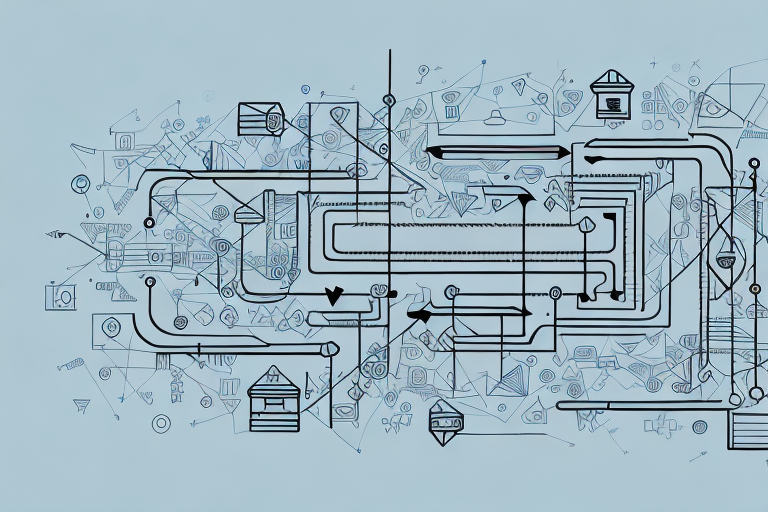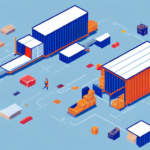Implementing a Reverse Logistics System to Improve Efficiency and Reduce Costs
In today's competitive business environment, enhancing efficiency and cutting costs are paramount for gaining a strategic advantage. One effective strategy to achieve these goals is the implementation of a reverse logistics system. This article delves into the fundamentals of reverse logistics, underscores its significance, explores its benefits, and provides actionable insights for successful implementation.
Understanding Reverse Logistics
What is Reverse Logistics?
Reverse logistics involves managing the flow of products from consumers back to the manufacturers or other points in the supply chain. This includes activities such as product returns, refurbishments, repairs, recycling, and disposal. Unlike traditional forward logistics, which focuses on the distribution of goods from producers to consumers, reverse logistics caters to the return journey of products.
Key Components of Reverse Logistics
- Returns Management: Handling customer returns efficiently to minimize costs and maintain customer satisfaction.
- Refurbishment and Repairs: Restoring returned products to a sellable condition.
- Recycling and Disposal: Environmentally responsible disposal or recycling of products that cannot be refurbished.
- Asset Recovery: Recovering value from returned products through resale or parts harvesting.
The Importance of Reverse Logistics in Modern Business
Enhanced Customer Satisfaction
A seamless reverse logistics process ensures that customers can return products easily, which significantly boosts their satisfaction and loyalty. According to a Statista report, the average return rate in e-commerce is around 30%, making efficient returns management crucial.
Cost Reduction and Revenue Recovery
Effective reverse logistics can lead to substantial cost savings by reducing waste, optimizing inventory, and reclaiming value from returned products. A study by the Supply Chain Digital highlights that companies can save up to 25% in operational costs through optimized reverse logistics.
Sustainability and Environmental Impact
Reverse logistics plays a pivotal role in promoting sustainability. By facilitating recycling and proper disposal of products, businesses can reduce their environmental footprint. The EPA emphasizes the importance of sustainable materials management, where reverse logistics is a key component.
Benefits of Implementing a Reverse Logistics System
Operational Efficiency
Streamlining reverse logistics processes enhances overall operational efficiency. Automated systems and clear procedures reduce processing times and minimize errors.
Inventory Management
Reverse logistics allows for better inventory control by tracking returned items, identifying trends, and addressing recurring issues with products.
Regulatory Compliance
Adhering to regulations regarding product disposal and recycling is simplified through a structured reverse logistics system, mitigating legal risks.
Customer Loyalty and Brand Reputation
Offering hassle-free returns fosters trust and loyalty among customers, positively impacting the brand's reputation. According to a Forbes article, excellent customer service, including efficient returns, is a significant driver of repeat business.
Strategies for Effective Reverse Logistics Implementation
Leverage Technology
Investing in advanced software solutions for tracking and managing returns can significantly enhance the efficiency of reverse logistics operations. Tools like Oracle SCM and SAP SCM offer robust reverse logistics functionalities.
Establish Clear Policies and Procedures
Developing comprehensive return policies and standard operating procedures ensures consistency and efficiency in handling returns and other reverse logistics activities.
Partner with Reliable Third-Party Providers
Collaborating with specialized logistics partners can provide expertise and infrastructure necessary for managing reverse logistics effectively.
Continuous Monitoring and Improvement
Regularly reviewing reverse logistics performance through key performance indicators (KPIs) helps identify areas for improvement and ensures the system remains efficient and cost-effective.
Overcoming Challenges in Reverse Logistics
Complexity of Returns Management
Handling a high volume of returns can be complex. Implementing automated systems and clear workflows can mitigate these challenges.
Cost Management
While reverse logistics can save costs, it also requires investment. Balancing expenses with potential savings through careful planning is essential.
Data Accuracy and Visibility
Ensuring accurate tracking and visibility of returned products is crucial. Utilizing real-time tracking systems enhances data accuracy and operational transparency.
Future Trends in Reverse Logistics
Increased Automation and AI Integration
The integration of artificial intelligence and automation in reverse logistics will lead to more efficient processing and better decision-making based on data insights.
Blockchain for Enhanced Transparency
Blockchain technology can provide immutable records of product journeys, enhancing transparency and trust in reverse logistics operations.
Focus on Circular Economy
There is a growing emphasis on the circular economy, where reverse logistics is integral to creating sustainable business models that prioritize reuse and recycling.
Case Studies: Success Stories in Reverse Logistics
Walmart
Walmart's reverse logistics system has significantly reduced transportation costs by optimizing return shipments, resulting in a 33% decrease in truck usage for returns.
Cisco
Cisco's reverse logistics initiative streamlined its returns processing, cutting overall processing time by 80%, thereby enhancing operational efficiency.
Dell
Dell's closed-loop reverse logistics system for refurbishing returned computers has not only reduced waste but also saved the company over $50 million.
Measuring the Success of Reverse Logistics Systems
Key Performance Indicators (KPIs)
- Return Processing Time: Time taken to process returned items.
- Cost per Return: Total cost involved in processing each return.
- Recovery Rate: Percentage of returned products that are refurbished or resold.
- Customer Satisfaction: Feedback and ratings related to the returns experience.
Continuous Improvement
Regularly analyzing KPIs and customer feedback allows businesses to refine their reverse logistics processes, ensuring ongoing efficiency and customer satisfaction.
Conclusion
Implementing a reverse logistics system offers multifaceted benefits, including cost reduction, enhanced customer satisfaction, and improved sustainability. By adopting best practices, leveraging technology, and continuously refining processes, businesses can optimize their reverse logistics operations, leading to significant competitive advantages in the market.




















